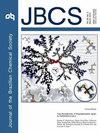大面积钙钛矿太阳能电池和迷你模块组装的简便方法:层处理的逐步描述
IF 1.3
4区 化学
Q3 CHEMISTRY, MULTIDISCIPLINARY
引用次数: 0
摘要
有机-无机杂化钙钛矿由于其优异的光电性能和低温可加工性在光伏领域引起了人们的兴趣。从2009年到2021年,实验室规模的钙钛矿太阳能电池(PSC)的功率转换效率(PCE)达到25.7%,面积为800 cm2的钙钛矿太阳能组件的PCE达到17.9%。本研究采用自旋镀膜、叶片镀膜和喷涂三种沉积技术,将钙钛矿太阳能电池的电荷输运层和活性层加工到5cm × 5cm大小的衬底上,器件结构为玻璃/掺氟氧化锡(FTO)/c-TiO2/介介tio2 +钙钛矿/2,2 ',7,7 ' -四akis(N,N-二对甲氧基苯基胺)9,9 ' -螺芴(spiro-OMeTAD)或聚(3-己基噻吩)(P3HT)/Au。大面积PSC实现了约1.1 V的开环电压和6%的PCE。产生的能量足以启动风扇。此外,两个大面积PSCs串联产生1.9 V的电压。然后,我们开发了一种简单的方法来制造包含两个串联PSCs的单片钙钛矿迷你模块,而无需使用激光划线工艺(通常称为P1, P2和P3工艺)。这个微型模块提供1.52 V的电压。两个电压(1.9和1.52 V)都足以打开红色(或黄色)发光二极管(LED)。据我们所知,这是第一份描述在巴西组装大面积n-i-p钙钛矿单电池和迷你组件的科学报告。本文章由计算机程序翻译,如有差异,请以英文原文为准。
Facile Methods for the Assembly of Large-Area Perovskite Solar Cells and Mini‑Module: A Step-by-Step Description of Layers Processing
Hybrid organic-inorganic perovskites have attracted interest in photovoltaic applications due to their excellent optoelectronic properties and low-temperature processability. From 2009 to 2021, lab-scale perovskite solar cells (PSC) reached a power conversion efficiency (PCE) of 25.7%, and a PCE of 17.9% for perovskite solar modules with an area of 800 cm2. Here, we present an investigation using three deposition techniques, spin-coating, blade-coating, and spraycoating, to process the charge transport layers and the active layer of perovskite solar cells onto 5 cm × 5 cm sized substrates, with device structure glass/fluorine-doped tin oxide (FTO)/c-TiO2/ meso-TiO2+Perovskite/2,2’,7,7’-tetrakis(N,N-di-p-methoxyphenyl-amine)9,9’-spirobifluorene (spiro-OMeTAD) or poly(3-hexylthiophene) (P3HT)/Au. Large-area PSC achieved an opencircuit voltage of around 1.1 V and PCE of 6%. The power generated was sufficient to start a fan. Furthermore, the connection in series of two large-area PSCs generated a voltage of 1.9 V. Then, we developed a simple method for manufacturing a monolithic perovskite mini-module containing two series-connected PSCs without using laser-scribing processes (usually named P1, P2, and P3 processes). This mini-module delivered a voltage of 1.52 V. Both voltages (1.9 and 1.52 V) were enough to turn on a red (or yellow) light-emitting diode (LED). To our knowledge, this is the first scientific report describing the assembly of a large-area n-i-p perovskite single cell and mini-module in Brazil.
求助全文
通过发布文献求助,成功后即可免费获取论文全文。
去求助
来源期刊
CiteScore
2.90
自引率
7.10%
发文量
99
审稿时长
3.4 months
期刊介绍:
The Journal of the Brazilian Chemical Society embraces all aspects of chemistry except education, philosophy and history of chemistry. It is a medium for reporting selected original and significant contributions to new chemical knowledge.

 求助内容:
求助内容: 应助结果提醒方式:
应助结果提醒方式:


